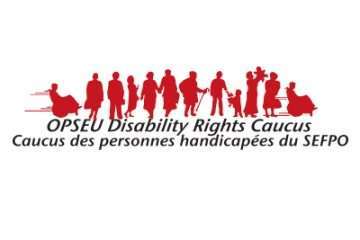
June is National Deafblind Awareness Month, promoting awareness of the special needs and abilities of deafblind people in our communities.
Approximately 466,420 Canadians live with deafblindness. Deafblindness can have varying levels of both hearing and vision loss. This creates additional barriers in accessing information and services as well as educational, vocational and social interests.
A person who is deafblind may experience life in a unique way and will often require adaptive communication supports or a trained intervenor who can provide visual and auditory information.
As we experience our own frustrations navigating various services, it’s important to be mindful of the further gaps in services that deafblind Canadians must deal with. For example, the number of healthcare providers that know sign language are limited, creating barriers not only in communication but also in assurances that there is a good understanding of the information shared between the deafblind patient and their medical team.
The levels of service provided by each province can vary and there is no mechanism in place to hold provinces and territories accountable for equitable service delivery.
A 2019 Stakeholder Consultation Project by DeafBlind Ontario Services highlighted barriers caused by limited access to services and the high cost of assistive devices. While Ontario has an Assistive Devices Program (ADP) which covers 75% of costs, assessments and repair costs are not covered under this program. For those who are deafblind, income and resources are often limited, making the 25% difference out of reach for many. The application process can be complex and lengthy and not all devices are covered; the list of approved devices has not been updated to include new available technology, like smartphones or adaptive computer screens.
With intervenors mostly available in large cities and almost non-existent in rural areas, we see an inequitable distribution of services and the dependence on assistive devices becomes evident. This situation is compounded by a lack of institutions and/or colleges that offer standardized training and insufficient government funding, as outlined in the report.
The Canadian Deafblind Association, along with Deafblind associations worldwide, are inviting communities to participate in a street arts awareness campaign of yard bombing with knit or crocheted pieces to objects in public spaces. You can read more about this event and find one near you here: https://deafblindontario.com/events/national-deafblind-awareness-month/
As we commemorate National Deafblind Awareness Month, OPSEU/SEFPO remains committed to fighting for improved accessibility in our workplaces and our union, and to build a better, more inclusive Ontario.
In Solidarity,
JP Hornick, OPSEU/SEFPO President
Laurie Nancekivell, OPSEU/SEFPO First Vice-President/Treasurer
Susan Fournier and Janet Heyman, OPSEU/SEFPO Disability Rights Caucus, Co-Chairs